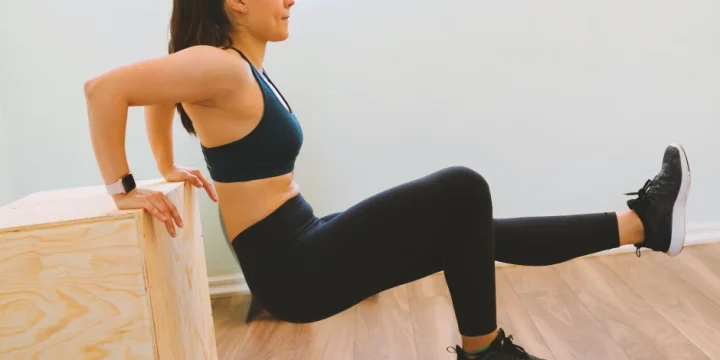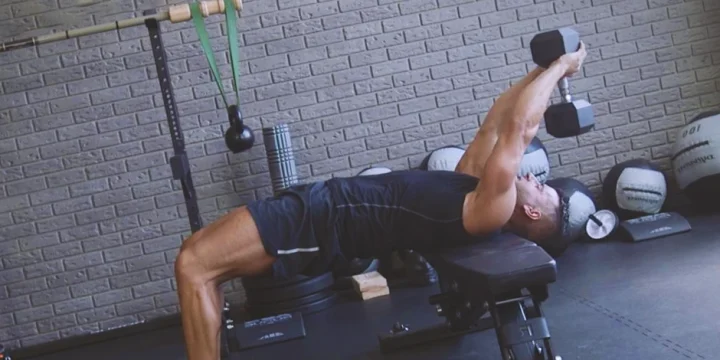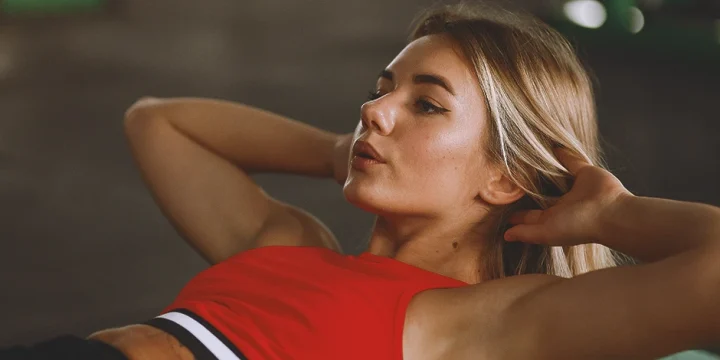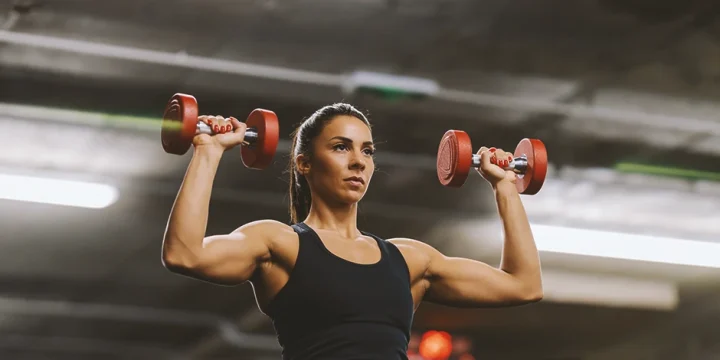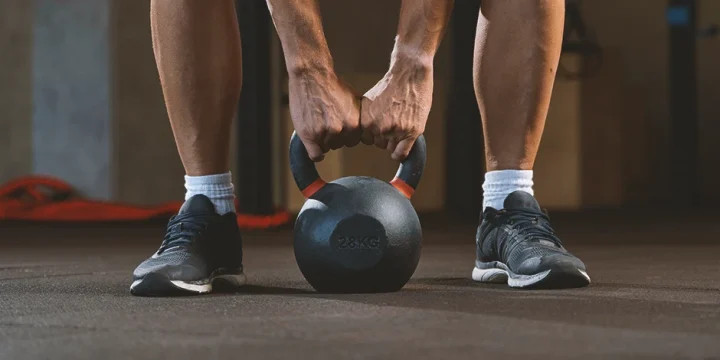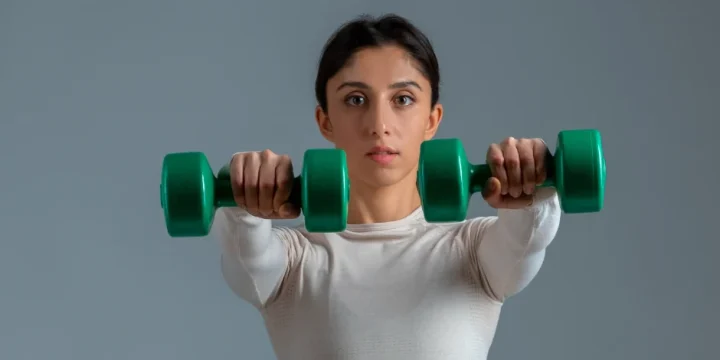Squats are a powerhouse for building strength and muscle, and it's not just about traditional barbell squats.
As a certified personal trainer, I've seen clients achieve remarkable strength gains and muscle development through various dumbbell squat exercises.
After extensive research and hands-on testing, I've curated the best dumbbell squat variations for you. This article will guide you through each technique and help you avoid common beginner mistakes.
Quick Summary
- To enhance muscle strength and size, incorporating various dumbbell squat exercises like the classic dumbbell squat, dumbbell goblet squat, or dumbbell cyclist squat is highly effective.
- Beginners should start with bodyweight squats, as they form the foundation for more advanced dumbbell squat variations.
- Research from the Journal of Strength and Conditioning Research validates the classic dumbbell squat as a highly efficient variation for increasing lower body strength.
- In my professional experience, dumbbell squats offer a balanced muscle workout with less strain on the lower back compared to barbell squats, and complementing this routine with the right protein powders can significantly enhance muscle growth and recovery.
Top 10 Dumbbell Squat Variations for Strength and Size

There are numerous dumbbell squat variations, and if you are just a beginner, you should start with bodyweight squats since they are a building block for all the exercises below, as per Harvard Health [1].
The dumbbell squats in general, in contrast to barbell squats, offer more balanced muscle engagement and reduced lower back strain, making them an ideal choice for individuals with varying fitness levels and goals.
All lower body exercises from the list below were tested by me and my team of fitness professionals to ensure they are safe for all fitness levels, except for total beginners who have never had a single workout.
In addition, we provided clear and easy-to-follow instructions for each exercise to ensure you avoid injury by executing the technique in the best way possible.
Below, you may find the different dumbbell squat variations for strength and size.
"The squatting movement is a necessary yet often challenging movement for many athletes and fitness goers alike. Individual differences in mobility, joint structure, and previous injuries often result in coaches needing to manipulate squat exercises and patterning to regress and progress an athlete/lifter properly."
- Mike Dewar, Certified Personal Trainer
1. Classic Dumbbell Squat
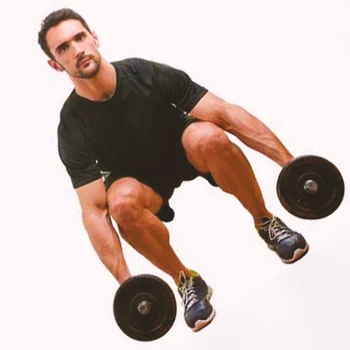
The classic dumbbell squat is one of the most efficient squat variations to increase your lower body functionality and strength, according to research from the Journal of Strength and Conditioning Research [2].
It will effectively target your quadriceps, glutes, hamstrings, and hip flexors while building grip strength due to the dumbbell hanging position.
How to Perform Classic Dumbbell Squats
- Pick two dumbbells of appropriate weight so you can perform at least eight consecutive reps without resting.
- Assume a standing position, shoulder-width apart, and hold two dumbbells in each hand. They should be hanging on the sides of your body, as in the anatomical position.
- Start the exercise by lowering yourself down and entering the squat position.
- When your inner thighs become parallel to the ground, reverse the motion to return to the starting position.
- Repeat for 8 reps, 4 sets, and rest for 2 minutes between the sets.
2. Dumbbell Goblet Squat
The dumbbell goblet squat is an excellent option, often performed with kettlebells instead of dumbbells, but this variation is as effective for building muscles.
Goblet squats will hit the same muscles as in the previous exercise but will also develop a small amount of biceps isometric strength due to the dumbbell goblet position.
This dumbbell exercise is great for quads.
How to Perform Dumbbell Goblet Squats
- Pick one dumbbell of appropriate weight so you can perform at least 10 reps in a single set without resting.
- Assume a standing, shoulder-width apart position, and place the dumbbell in the goblet squat position.
- Start the exercise by lowering yourself to the floor while not rounding your back and ensuring your knees follow the line of your toes.
- Hold that position for one second when your thighs become parallel to the ground.
- Reverse the motion to return to the starting position.
- Repeat for 10 reps, 4 sets, and rest for 3 minutes between the sets.
3. Dumbbell Cyclist Squat

The dumbbell cyclist squat will primarily shift the weight to your knees due to its unique position.
The weight you put below your heels will elevate your foot (plantarflexion) and ensure no limiting range of motion is associated with your ankle joint.
How to Perform Dumbbell Cyclist Squats
- Place two small weight plates on the ground to touch each other with their sides.
- Ensure the thickness of the weight is appropriate. Most of the time, a couple of centimeters works just fine.
- Pick two dumbbells of the appropriate weight so you can perform 12 consecutive repetitions without resting.
- Stand with both your heels on the weight plates to become elevated compared to your toes.
- Assume a shoulder-width position and point your toes outward (slightly) to enter the squat position easily.
- Start the exercise by lowering yourself to the ground.
- Hold that position for one second when your thighs become parallel to the ground.
- Reverse the motion to return to the starting position with your knees fully extended.
- Repeat for 12 reps, 3 sets, and rest for 90 seconds between the sets.
4. Dumbbell Front Rack Squat
In my own training, I've used dumbbell front squats to closely mimic the biomechanics of barbell front squats, noticing significant improvements in stability and core engagement.
It is excellent for developing stability in your whole body due to its unique front squat position. The shoulder stabilizer muscles will strengthen, and your core muscles will get activated too.
How to Perform Dumbbell Front Rack Squats
- Pick two dumbbells of appropriate weight so you can perform up to eight repetitions without rest.
- Assume a standing position with two dumbbells in each hand.
- Place the dumbbells in the “front rack squat” position at the level of your shoulders, and assume a shoulder-width apart stance.
- Start the exercise by performing the eccentric phase of the squat, i.e., bending your hips, knees, and ankles (triple extension/flexion).
- Push through your heels to return to the starting position when your thighs parallel the ground.
- Repeat for 8 reps, 4 sets, and rest for 3 minutes between the sets.
5. Overhead Squat
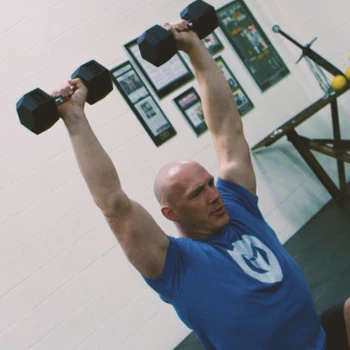
The overhead squat is another excellent dumbbell squat variation that will build unprecedented stabilizer strength in your shoulders, as per the International Journal of Sports Physical Therapy study [3].
It is a demanding squat exercise requiring sufficient shoulder mobility and stability.
How to Perform Overhead Squats
- Pick two dumbbells of the appropriate weight so you can perform six consecutive reps without resting.
- Assume a standing position, shoulder-width apart, and slightly point your toes outward.
- Place both dumbbells in the overhead position with maximal shoulder flexion or abduction and a fully extended elbow.
- Start the exercise by initiating the lowering phase of the squat by bending your hips, knees, and ankles.
- Hold that position for one second when your inner thighs become parallel to the ground.
- Reverse the motion to return to the starting position.
- Repeat for 6 reps, 4 sets, and rest for 3 minutes between the sets.
Related: How to Overhead Press: Proper Form and Technique
6. Single-Arm Dumbbell Overhead Squat
The single-arm dumbbell overhead squat is an effective unilateral squat variation that targets the same muscles but requires additional core activation to stabilize the movement, based on research from the Biology of Sport journal [4].
How to Perform Single-Arm Dumbbell Overhead Squats
- Pick one dumbbell of the appropriate weight so you can perform 8 reps without resting.
- Assume a shoulder-width position with your toes turned slightly outward, allowing you to enter deeper into the squat position.
- Place the dumbbell in the overhead position while maintaining full flexion/abduction in the shoulder and a fully extended elbow (this is for the hand that holds the dumbbell).
- Start the exercise by performing the eccentric phase of the squat. Bend your hips, knees, and toes at the same time.
- Hold that position for a second when your thighs become parallel to the ground.
- Reverse the motion to return to the starting position.
- Repeat for 8 reps, 3 sets, and rest for 3 minutes between the sets.
7. Dumbbell Split Squat
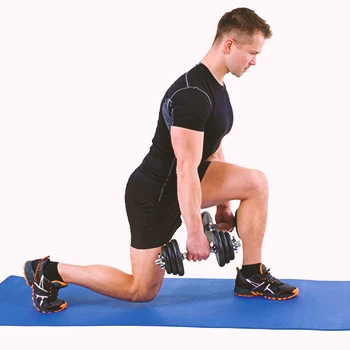
The dumbbell split squat is a unilateral variation of the regular dumbbell squat that targets the same muscles but requires additional core strength to execute.
How to Perform Dumbbell Split Squats
- Pick two dumbbells of appropriate weight so you can perform six reps with each leg.
- Assume a split squat position with your right leg forward and your left backward.
- Hold both dumbbells in each hand so they hang near your body, just like in the anatomical position.
- Start the exercise by lowering yourself to the split squat position.
- Stop when your thigh (of the forward leg) becomes parallel to the ground, and hold that position for one second.
- Reverse the motion to return to the starting position.
- Repeat for 6 reps with each leg, 3 sets, and rest as much as you need between the sets.
"Dumbbells, when used effectively, can strengthen and add mass to your legs as effectively as any other tools in the gym."
- Andrew Coates, Certified Personal Trainer
8. Dumbbell Bulgarian Split Squat
Having introduced the dumbbell Bulgarian split squat to advanced clients, I've witnessed its effectiveness in enhancing balance and muscle coordination beyond the regular split squat.
How to Perform Dumbbell Bulgarian Split Squats
- Pick two appropriately sized dumbbells to perform six reps with each leg.
- Place your back leg on an elevated surface, such as a flat bench or plyo box, and assume a starting split squat position.
- Start the exercise by lowering yourself while keeping your back straight.
- When your front leg’s thigh becomes parallel to the ground, reverse the motion to return to the starting position.
- Repeat for 6 reps on each leg, 3 sets, and rest for 3 minutes between the sets.
9. Dumbbell Sumo Squat
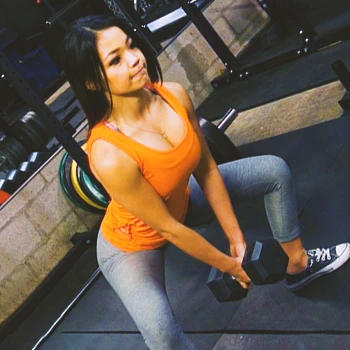
Dumbbell sumo squats are the best squat variation for additionally exercising weak adductors muscles.
How to Perform Dumbbell Sumo Squats
- Pick one dumbbell of appropriate weight and hold it with both hands while letting it hang below your waist.
- Assume a wider stance and slightly point your toes outward.
- Start the exercise by lowering yourself to the floor.
- When your thighs reach a parallel position with the floor, reverse the motion to return to the starting position.
- Repeat for 8 reps, 4 sets, and rest for 3 minutes between the sets.
10. Dumbbell Side Squats
A dumbbell side squat is an excellent variation that will build unilateral strength in the frontal plane of motion.
How to Perform Dumbbell Side Squats
- Pick two dumbbells of appropriate weight so you can perform 8 reps on each leg.
- Let them hang from your hands and assume a shoulder-width position.
- Start the exercise by squatting on one side while keeping the other leg straight.
- When you reach the end range of motion, return to the starting position and repeat on the other leg.
- Repeat for 8 reps on each leg, 3 sets, and rest for 3 minutes between the sets.
Related articles:
FAQs
Are Squats With Dumbbells Effective?
Yes, squats with dumbbells are effective. Dumbbells are among the most functional fitness equipment that allows you a substantial range of motion at joints and is excellent for developing strength in stabilizer muscles.
What Squat Is Most Effective?
It depends on your goal to determine what squat is the most effective. However, the barbell squat is the most effective for building bilateral strength, while the dumbbell rear-foot elevated split squats are the best for building unilateral strength.
Can Dumbbell Squats Build Muscle?
Yes, dumbbell squats can build muscle. To build muscles with dumbbell squats, you must incorporate the principle of progressive overload for each following squat workout.
References:
- https://www.health.harvard.edu/exercise-and-fitness/the-advantages-of-body-weight-exercise
- https://www.ncbi.nlm.nih.gov/pmc/articles/PMC4640053/
- https://www.ncbi.nlm.nih.gov/pmc/articles/PMC4595915/
- https://www.ncbi.nlm.nih.gov/pmc/articles/PMC4314602/
About The Author
You May Also Like
